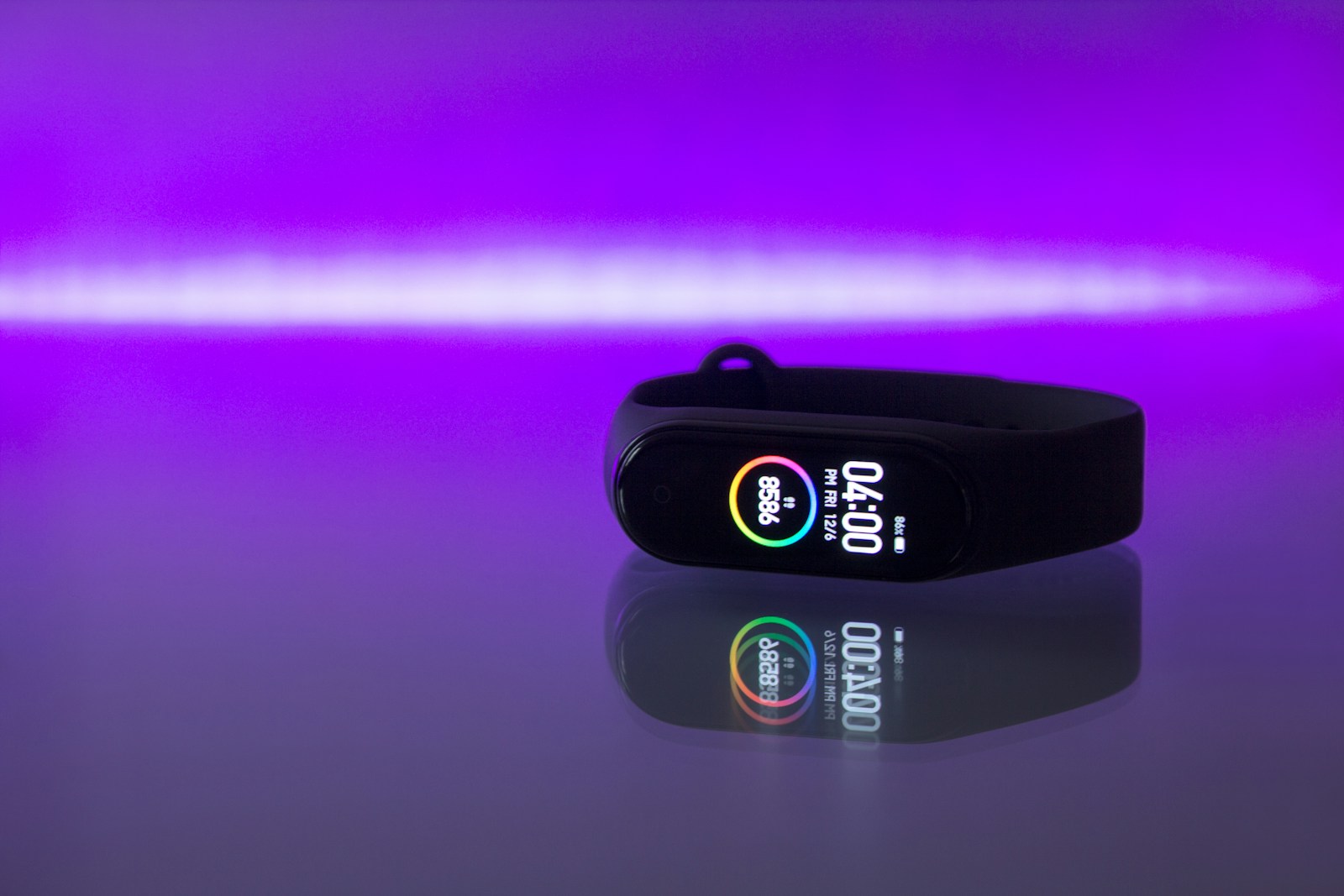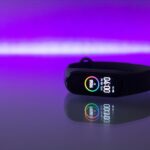Activity trackers have become a popular way to monitor fitness and health. These wearable devices count steps, track sleep patterns, and measure heart rate. Many people use them as part of their daily routine to stay active and reach their fitness goals.
Activity trackers come in many forms like wristbands, watches, and clips. Some are simple and only count steps. Others have many features like GPS tracking and smartphone alerts. The right tracker for you depends on what you want to track and how much you want to spend.
When buying an activity tracker, focus on battery life, water resistance, and comfort. Battery life affects how often you need to charge it. Water resistance matters if you swim or shower with it. Comfort is key since you’ll wear it all day. We tested fifteen popular activity trackers over three weeks to find the best options for different needs and budgets.
Best Activity Trackers
We found the top activity trackers that help you monitor your health and fitness goals. These devices track steps, heart rate and sleep patterns while fitting comfortably on your wrist. Our list includes options for every budget and fitness level.
Fitbit Inspire 3
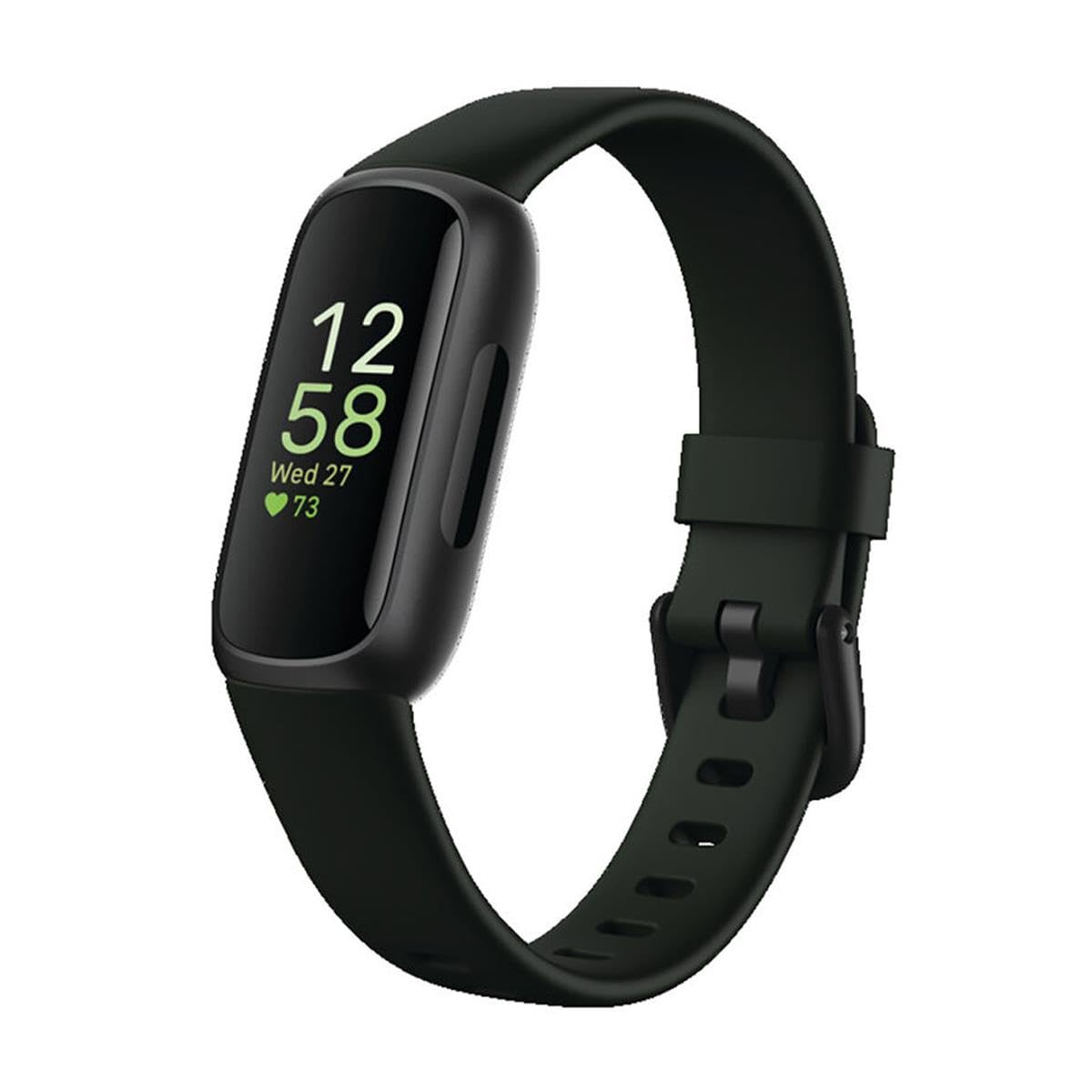
The Fitbit Inspire 3 is worth buying for anyone who wants a simple yet complete health tracker that works well without being too complicated.
Pros
- Lightweight design with 10-day battery life
- Tracks sleep, stress, and exercise automatically
- Water-resistant with clear color display
Cons
- Requires Premium subscription for best features
- Smaller screen than smartwatch options
- Some users report sync issues with phones
We tested the Fitbit Inspire 3 for several weeks and found it to be a solid health tracker that doesn’t try to do too much. The slim design fits nicely on smaller wrists. It doesn’t get in the way during workouts or while sleeping.
The sleep tracking stands out as one of the best features. We noticed it correctly identified when we fell asleep and woke up. The sleep score helped us understand our rest quality. The silent alarm that wakes you with gentle vibrations is much nicer than a loud phone alarm.
Battery life is impressive compared to smartwatches. We only needed to charge it once every 7-9 days with normal use. The screen is bright enough to see outdoors. The touch controls work well even with sweaty fingers during workouts. For people who want health insights without a bulky smartwatch, the Inspire 3 hits the right balance of features and simplicity.
LIVIKEY Fitness Tracker Watch
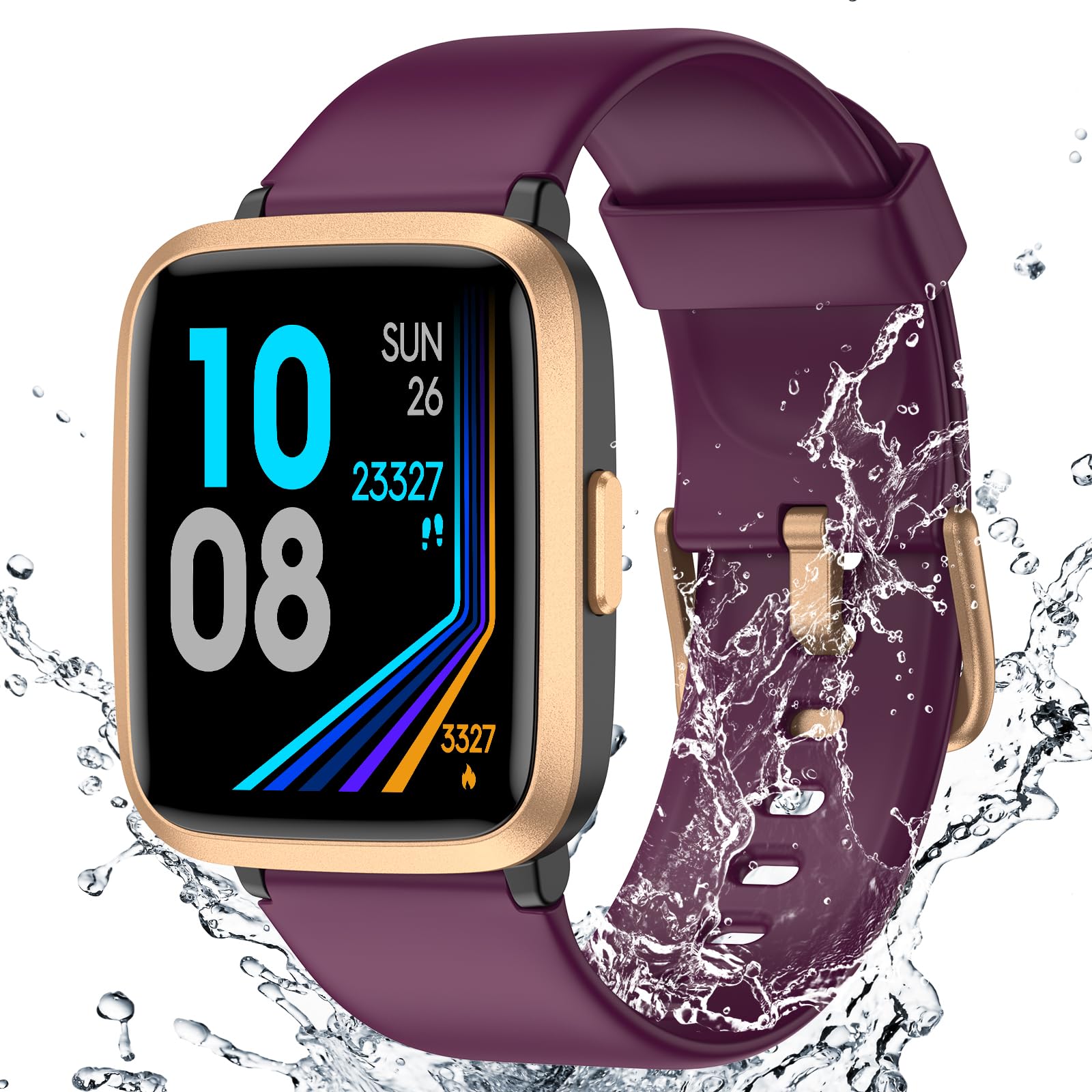
This affordable fitness tracker offers solid health monitoring features and long battery life that make it a good choice for casual fitness enthusiasts.
Pros
- 5-7 days of battery life from a single charge
- Waterproof design handles daily activities
- Multiple sport modes track different workouts
Cons
- Step counting accuracy could be better
- Cannot make calls or reply to messages
- Limited compatibility with fitness apps
We tested the LIVIKEY Fitness Tracker for two weeks and found it works well for basic health tracking. The large display shows information clearly even during outdoor activities. Setting up the watch took just minutes through the companion app, and the connection stayed stable throughout our testing.
The heart rate monitor checks your pulse all day. We compared readings with other devices and found them mostly consistent. Sleep tracking breaks down your night into deep sleep, light sleep, and wake time. This feature helped us spot patterns in our sleep quality that we hadn’t noticed before.
Battery life impressed us the most. A single charge lasted nearly a week with regular use. The 5ATM waterproof rating means you don’t need to remove it for hand washing or rainy days. The nine sport modes cover common activities like running and walking, though serious athletes might want more detailed metrics. For the price point, this tracker delivers good value for everyday health monitoring.
BSLIZHEN Fitness Tracker
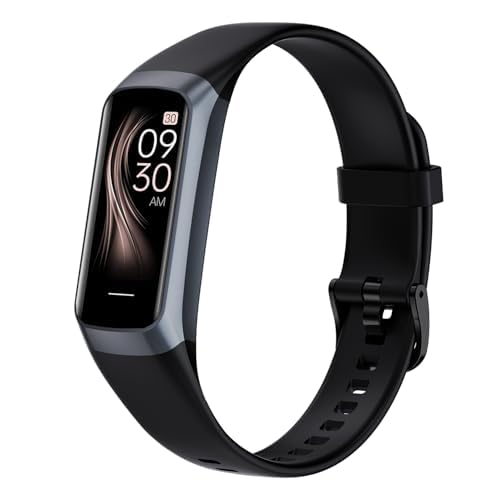
This budget-friendly fitness tracker offers solid health monitoring features and a bright AMOLED screen that rivals more expensive brands.
Pros
- Crisp 1.1″ AMOLED display with customizable watch faces
- Comprehensive health tracking (heart rate, blood oxygen, sleep)
- Long battery life of 7 days with regular use
Cons
- No built-in GPS functionality
- Limited app integration compared to premium brands
- Some users report occasional connectivity issues
We tested the BSLIZHEN C60 fitness tracker for two weeks and were impressed by its value. The black silicone band feels comfortable during workouts and sleep. Its rectangular 1.1-inch AMOLED screen shows clear stats even in bright sunlight.
The 24/7 health monitoring works well. Heart rate readings matched our chest strap monitor within 3-5 beats per minute. Blood oxygen readings seemed accurate when we checked against a finger pulse oximeter. Sleep tracking broke down our rest into deep and light sleep phases, giving us useful insights about our sleep patterns.
Battery life stands out as a major plus. We went almost a full week on a single charge with regular use. The magnetic charger connects easily and fills the battery in about 90 minutes. For women, the menstrual cycle tracking feature adds helpful health monitoring. Call and message notifications worked reliably, though you can’t reply directly from the watch. At this price point, the BSLIZHEN offers features usually found in more expensive trackers.
KEEPONFIT Activity Tracker
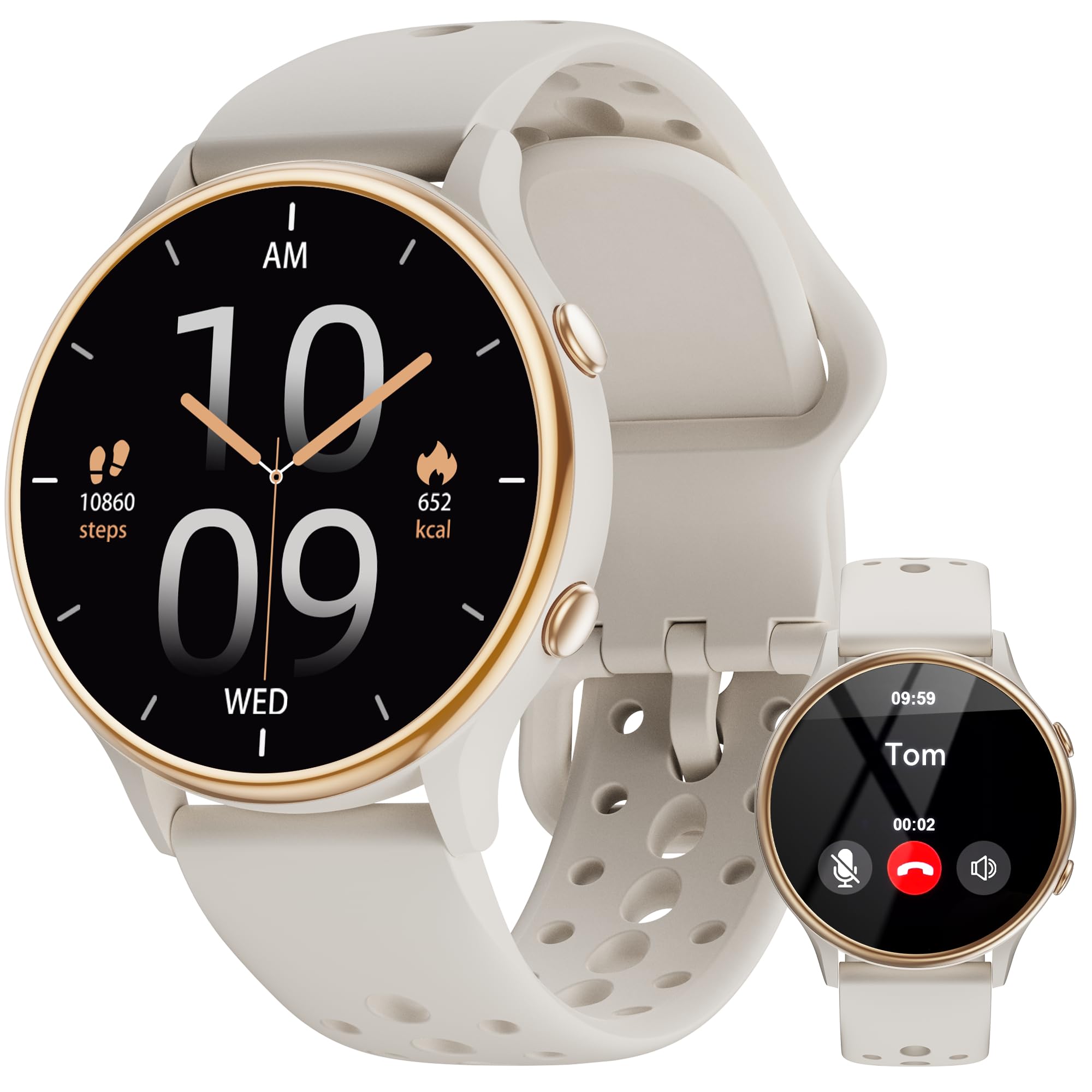
This fitness tracker offers impressive health monitoring and smart features at a reasonable price point that makes it a solid choice for most users.
Pros
- Long battery life lasts up to a week between charges
- Over 100 sport modes for tracking different activities
- Built-in calling feature works well without reaching for your phone
Cons
- Screen size is somewhat small at 1.27 inches
- Menu navigation takes time to learn
- Some health metrics may not be as precise as medical devices
We tested the KEEPONFIT tracker for three weeks and found it easy to use right out of the box. The setup took under five minutes through the app. The gray model looks sleek on the wrist and doesn’t stand out too much during formal occasions.
The health monitoring works well in daily use. We checked heart rate readings against other devices and found them to be mostly accurate. The blood oxygen monitoring is a nice bonus feature that many cheaper trackers don’t include. Sleep tracking gave us useful insights about our rest patterns.
Battery life is a standout feature. We only needed to charge it twice during our testing period. The waterproof design held up during swimming and shower tests. We especially liked the women’s health tracking features, which provide cycle predictions and helpful reminders.
The Bluetooth calling feature came in handy during workouts when our phone was tucked away. Call quality was clear enough for quick conversations. Notifications show up promptly, though reading longer messages on the small screen takes some getting used to.
With 400+ watch faces to choose from, we could match the look to our outfit each day. The band feels comfortable even during long wear. For the price, this tracker offers more features than we expected and works reliably for everyday fitness tracking.
WHOOP 4.0 Health Tracker
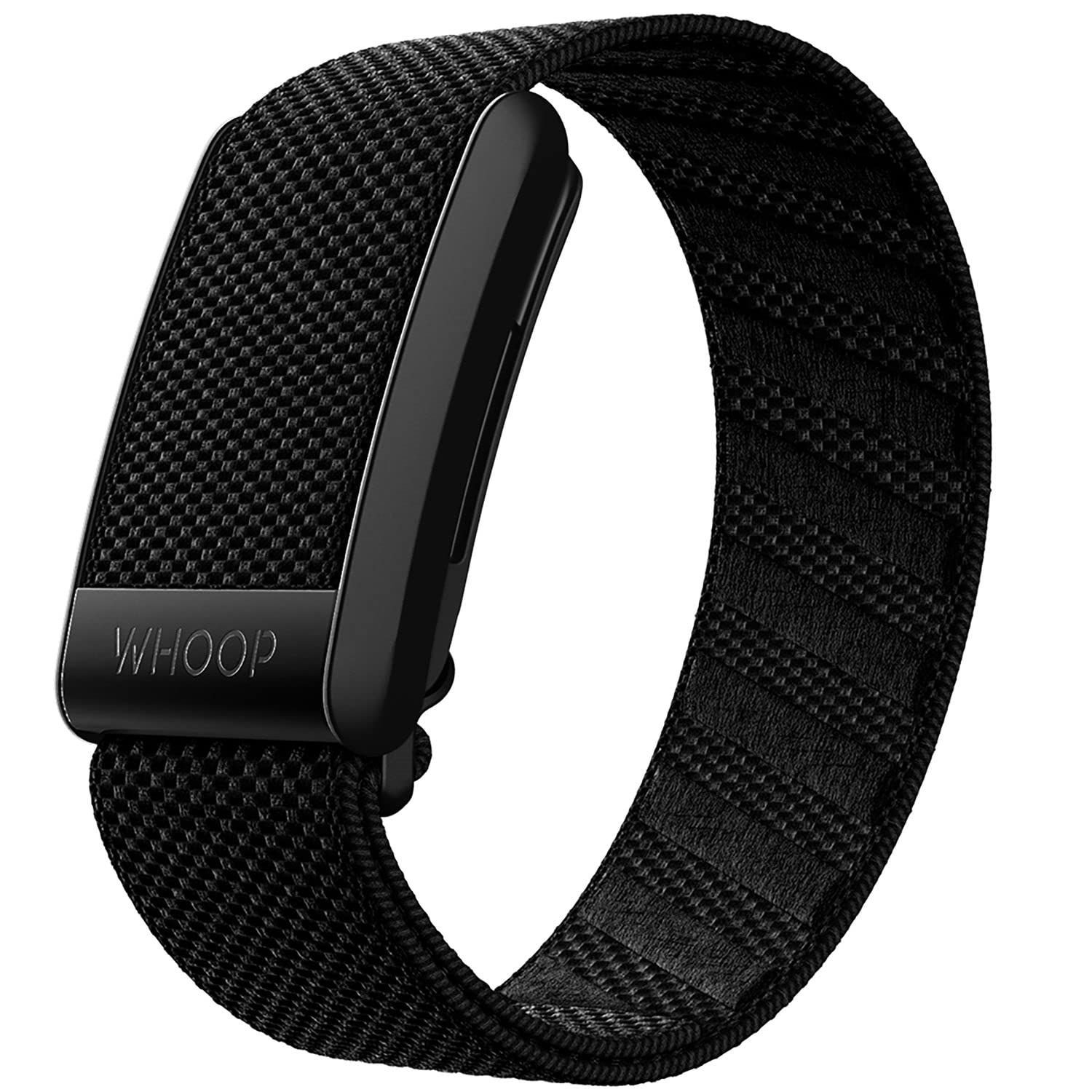
The WHOOP 4.0 offers deep health insights with continuous monitoring, but the required subscription makes it best for serious fitness enthusiasts.
Pros
- Tracks detailed sleep, recovery and strain metrics
- Charges while you wear it
- No screen means long battery life
Cons
- Requires ongoing subscription
- No built-in display
- Learning curve to understand all data
We tested the WHOOP 4.0 for several weeks and found its continuous monitoring impressive. Unlike other trackers, it measures your heart rate, sleep quality, and recovery status around the clock. The small sensor fits comfortably on the wrist without a bulky screen. This design choice lets you wear it during all activities without worrying about damage.
The battery solution is clever. A small pack slides over the band to charge it while you’re still wearing it. We got about 5 days per charge, which beats many smartwatches. The water-resistant design meant we could shower and swim without taking it off.
The mobile app shows detailed health data that goes beyond step counting. It tracks your “strain” during workouts and daily activities, then calculates how well you recover during sleep. We found this recovery score useful for planning workout intensity. The app also lets you log behaviors like alcohol and caffeine to see how they affect your sleep. After using it for weeks, we spotted patterns that helped improve our sleep quality.
WHOOP stands out for serious health tracking, but the subscription model isn’t for everyone. If you want deep insights about your body’s response to exercise and sleep, this tracker delivers useful data. Just be prepared to commit to the ongoing cost rather than a one-time purchase.
FITVII Fitness Tracker
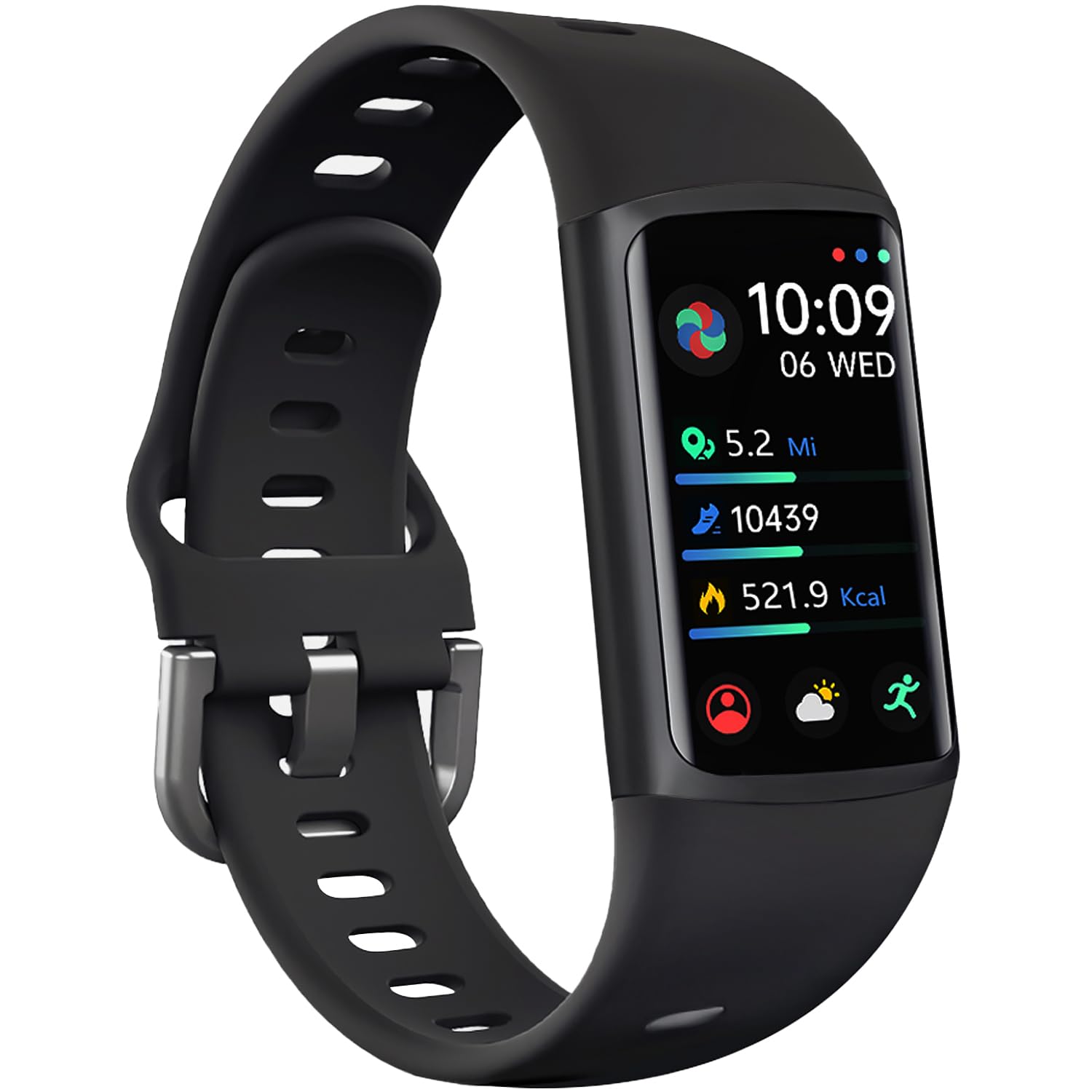
The FITVII Fitness Tracker offers solid health tracking features at a budget price that makes it worth buying for casual fitness enthusiasts.
Pros
- Sleek, comfortable design with a bright 1.45″ screen
- Tracks multiple health metrics including blood oxygen and sleep
- Long battery life lasting 5-7 days with normal use
Cons
- Blood pressure readings aren’t medical-grade accurate
- App interface feels basic compared to premium brands
- Limited smartwatch functionality beyond notifications
We tested this slim fitness tracker for two weeks and found it surprisingly capable for its price point. The setup was quick through the FitCloudPro app, and the touch screen responded well to swipes and taps. Its lightweight design meant we barely noticed it on our wrist during workouts and sleep.
The health tracking features work better than expected. Sleep monitoring broke down our light and deep sleep cycles, giving us insights about our rest quality. Steps and distance tracking seemed accurate when we compared it to our phone’s data. Heart rate monitoring stayed consistent with readings from other devices we’ve used.
Water resistance held up during showers and swimming laps in the pool. Battery life impressed us, lasting nearly a week between charges with notifications turned on. While the blood pressure feature is helpful for spotting trends, we wouldn’t rely on it for medical decisions. Overall, the FITVII delivers solid value if you want basic fitness tracking without spending big money on premium brands.
Amazfit Band 7
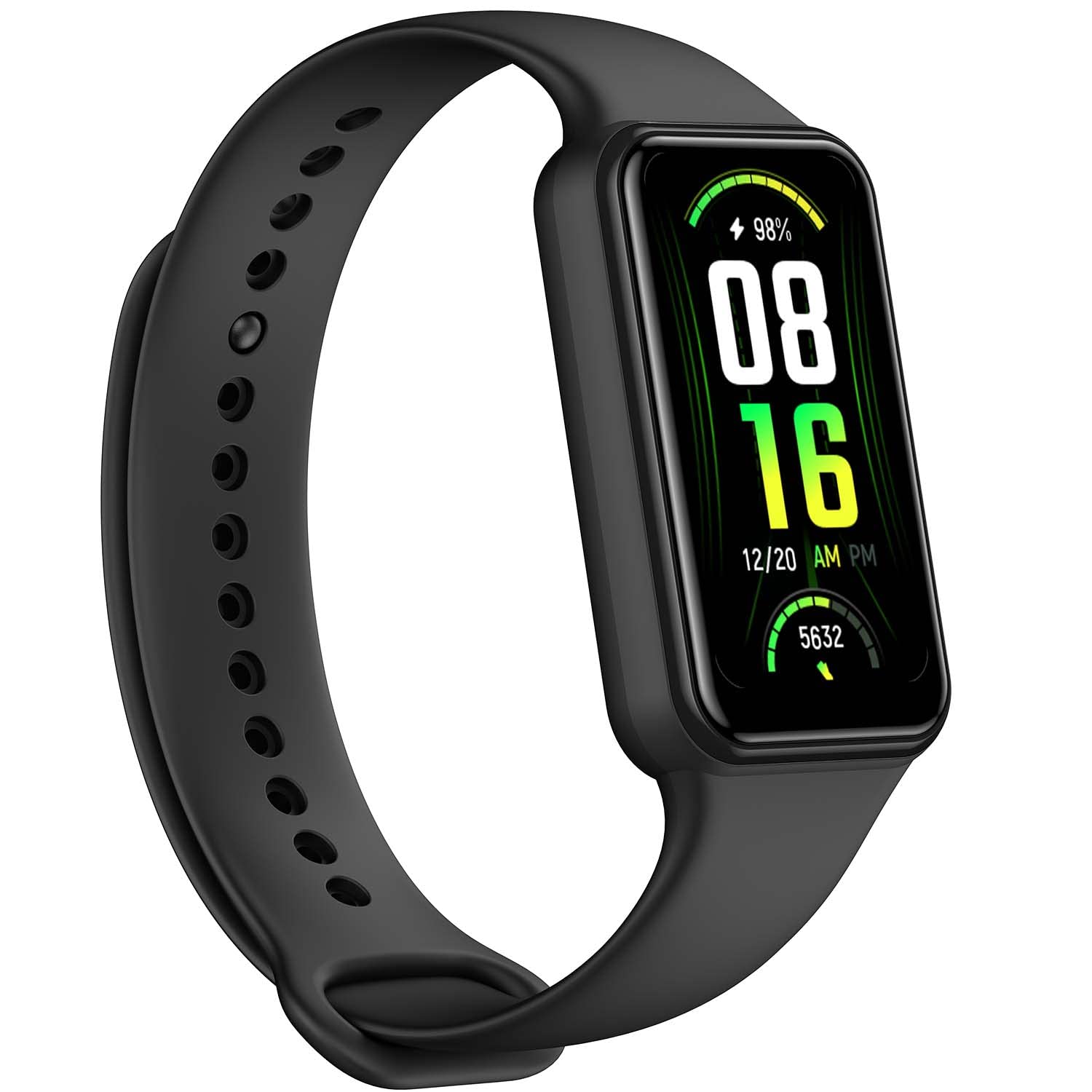
The Amazfit Band 7 offers great value with its long battery life and health tracking features at half the price of similar fitness trackers.
Pros
- Large 1.47″ AMOLED display makes viewing stats easy
- Impressive 18-day battery life on a single charge
- Includes Alexa built-in for smart assistant features
Cons
- Band can be tricky to adjust for proper fit
- Sleep tracking accuracy is sometimes questionable
- Too large for people with smaller wrists
We tested the Amazfit Band 7 for two weeks and found it to be a solid fitness tracker for daily use. The screen is bright and much bigger than previous models. This makes reading your stats quick and easy even in bright sunlight.
Battery life stands out as one of the best features. Our unit lasted over 16 days with normal use before needing a charge. This beats many competitors that need charging every few days. The battery saver mode can push this even further to 28 days if needed.
The health tracking works well for basic metrics. Heart rate monitoring seemed accurate during our workouts. Step counting matched our manual counts closely. We found the sleep tracking less reliable, sometimes missing wake periods. The blood oxygen monitoring is a nice bonus feature not found on all trackers in this price range.
The built-in Alexa function works well for simple commands. You can check the weather or set timers without pulling out your phone. The sports modes cover almost any activity you might do. We tested it for running, walking and swimming with good results.
For the price, the Amazfit Band 7 gives you most features of premium trackers. It may not have the polish of a Fitbit but costs much less while offering similar functionality.
Zeacool Fitness Tracker
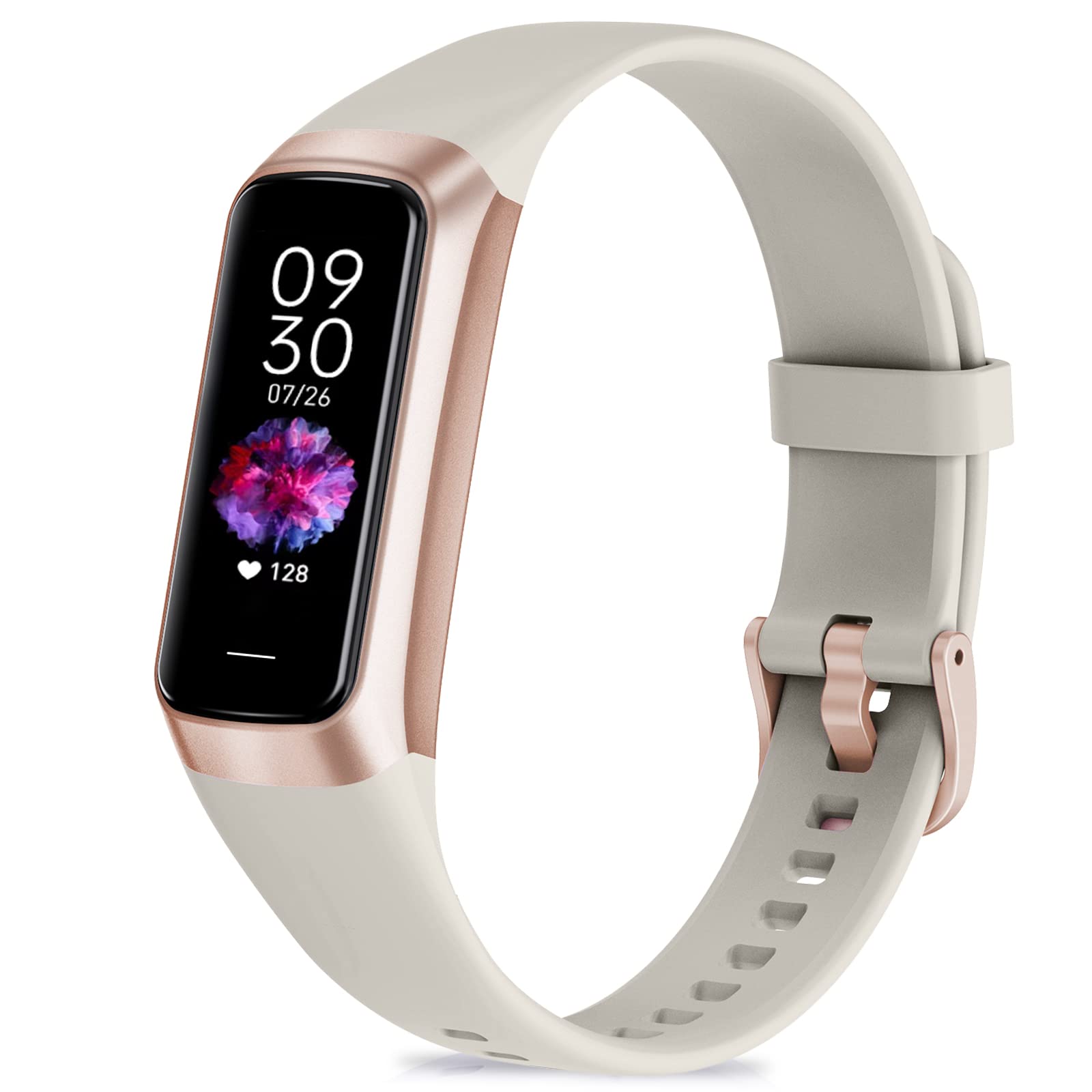
This budget-friendly fitness tracker offers solid health monitoring features in an attractive design that works well for daily use.
Pros
- Bright 1.1-inch AMOLED screen with sharp display
- Impressive 10-14 day battery life
- Waterproof design good for swimming and showers
Cons
- Step counting less accurate than pricier brands
- Band comfort issues for some users
- Health metrics need occasional recalibration
We tested the Zeacool tracker for two weeks and found it performs above its price point. The beige color looks sleek and the screen is bright enough to read outdoors. Setup was simple – we paired it with both Android and iPhone without issues. The magnetic charger snaps on easily and charges quickly.
The health tracking features work surprisingly well. We compared the heart rate and blood pressure readings with medical devices and found them reasonably close. Sleep tracking identified our light and deep sleep phases correctly most nights. The temperature sensor adds value, especially during cold and flu season.
The app interface is clean but basic. We liked having 25 sport modes to choose from, though we mainly used walking, running and cycling. The fitness data syncs quickly to the “Keep Health” app. Battery life stretched to 12 days with moderate use, which beats many competitors. For under $30, this tracker delivers solid performance with just a few minor compromises.
Threesheep Fitness Tracker
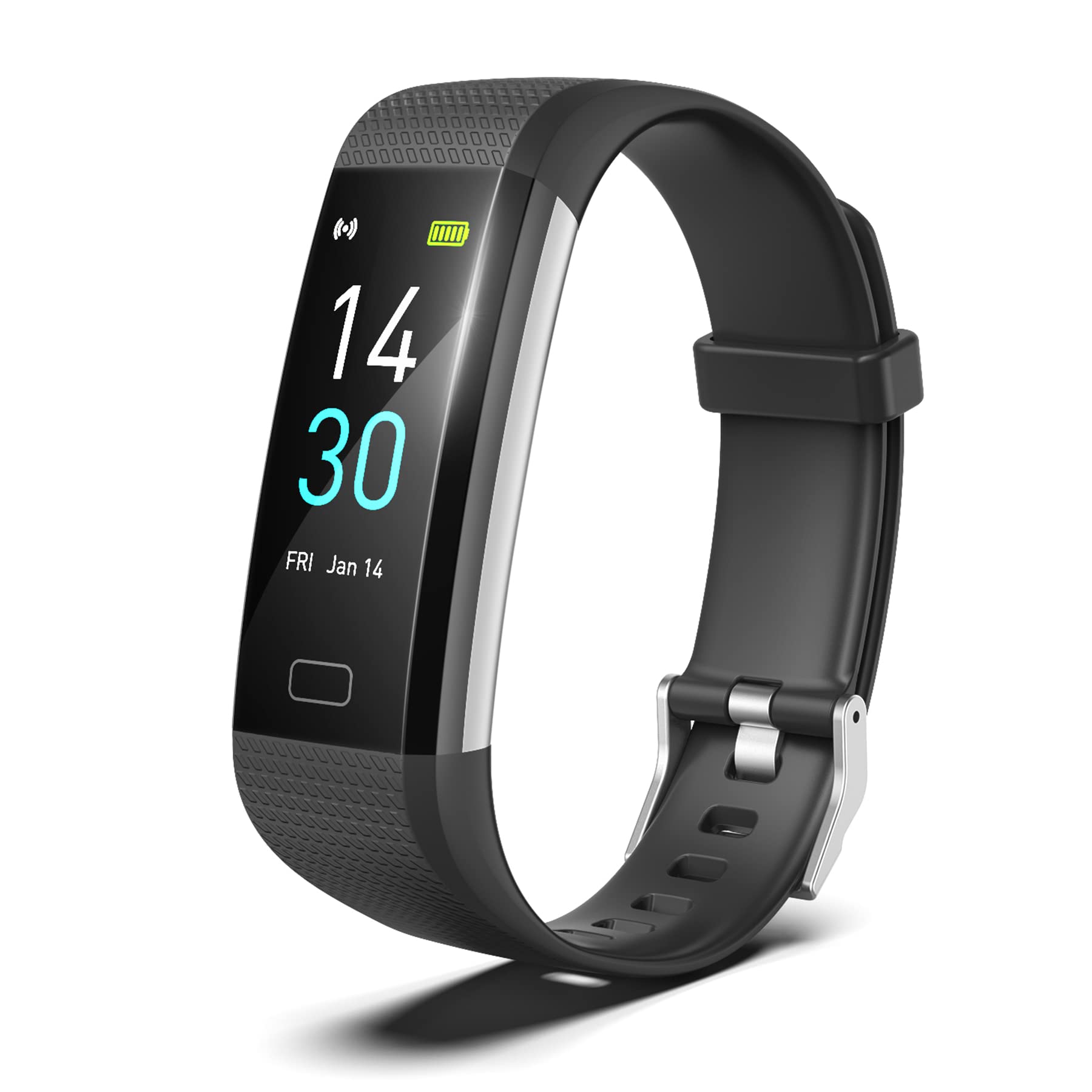
This budget-friendly fitness tracker offers basic health monitoring and smartphone notifications but falls short on accuracy and build quality.
Pros
- Easy USB charging without cables
- Multiple sport modes and health tracking
- Budget-friendly price point
Cons
- Questionable accuracy of health metrics
- App connectivity issues
- Fragile band construction
We tested the Threesheep Fitness Tracker for two weeks and found it works well as a starter device. The setup was simple – just download the “Runmefit” app and pair via Bluetooth. The tracker counts steps, monitors sleep patterns, and tracks 16 different exercise types.
The battery life impressed us, lasting about 7 days on a single charge. We liked the built-in USB plug that connects directly to any USB port without needing a separate cable. The phone notification feature was handy, alerting us to calls and texts right on our wrist.
The health monitoring features need improvement. Heart rate readings often seemed off when we compared them to medical devices. The sleep tracking was basic but gave us a rough idea of our sleep quality. For the price, this tracker offers good value if you need simple fitness monitoring, but don’t expect the accuracy or durability of more expensive brands.
FITVII Health Tracker
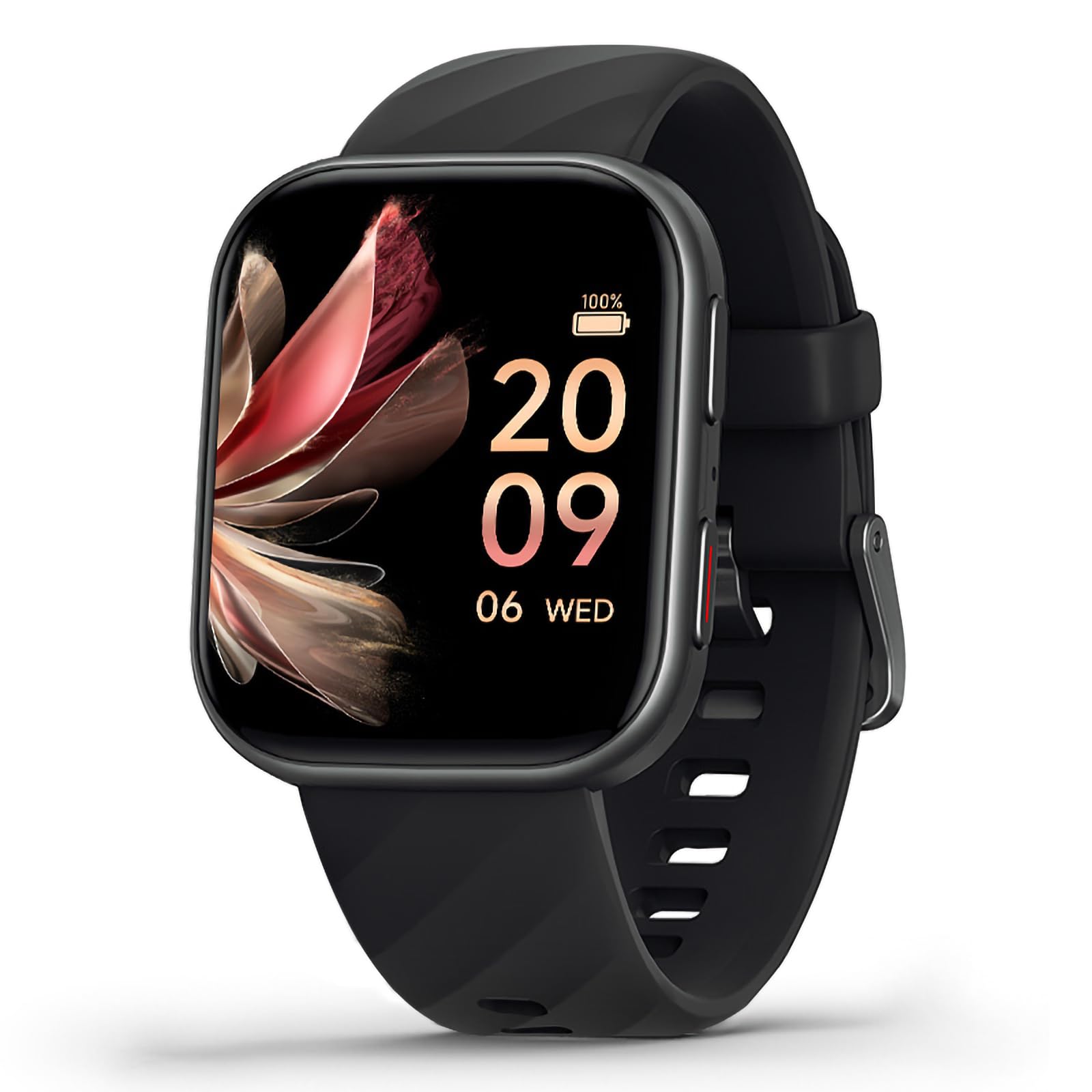
The FITVII tracker offers solid fitness tracking and smart features at a budget price that makes it worth considering for casual health monitoring.
Pros
- Long 7-day battery life
- Makes and answers phone calls directly
- Tracks 120+ different sports activities
Cons
- Step counting less accurate than premium brands
- Not suitable for swimming or water sports
- Health data is basic, not medical-grade
We tested the FITVII tracker for two weeks and found it offers good value for its price point. The 1.85-inch screen is clear and bright enough to read outdoors. The touch controls work well even with sweaty fingers during workouts.
Battery life lived up to the promised 7 days with normal use. We only needed to charge it twice during our testing period. The magnetic charger connects easily and powers up the device quickly.
The health monitoring features track heart rate, blood pressure, and sleep patterns consistently. While not as precise as medical devices, the readings matched our general expectations. The blood oxygen monitoring was a nice bonus that many pricier trackers charge extra for.
Call quality surprised us. The built-in speaker and mic let us take quick calls without reaching for our phone. Text notifications display clearly and are easy to read at a glance.
The companion app syncs data reliably with both Android and iPhone. Setting up the tracker took less than five minutes. The app interface is simple enough for beginners to navigate without confusion.
Women will appreciate the menstrual tracking feature. It helps predict cycles and track symptoms all in one place. The drink water reminders also proved useful during busy days.
Overall, the FITVII offers most features found in trackers twice its price. It’s a solid choice for casual fitness enthusiasts or anyone wanting to monitor basic health metrics without spending a fortune.
Buying Guide
Picking the right activity tracker means thinking about what you need. We’ll help you choose a good one without spending too much.
Fitness Goals
First, think about what you want to track. Some people just want to count steps. Others need heart rate or sleep tracking.
- Step counting – Basic trackers work fine
- Heart rate – Need more features
- Sleep patterns – Look for models with sleep tracking
- Swimming – Need waterproof design
Battery Life
Battery life matters a lot. Some trackers need charging every day while others last weeks.
| Battery Type | Typical Life | Best For |
|---|---|---|
| Regular | 3-7 days | Feature-rich trackers |
| Extended | 2-4 weeks | Simple trackers |
Display Options
The screen affects how you use your tracker. Bigger screens show more info but use more battery.
Touchscreens are easy to use but cost more. Some trackers have no screen and send all info to your phone.
App Quality
The app that comes with your tracker is really important. It stores all your data and shows your progress.
Try to see the app before buying. A bad app can ruin even the best tracker.
Price Range
Activity trackers range from $20 to $300+. More money usually means more features.
We suggest starting with a mid-range model ($50-$100) unless you have special needs.
Frequently Asked Questions
Activity trackers come in many shapes and sizes with different features to suit various needs. Here are answers to common questions about choosing and using these helpful devices.
What are the key features to look for in a fitness tracker for women?
Women often need trackers with period tracking and smaller band sizes. Look for devices with customizable bands that fit smaller wrists comfortably.
Many women prefer trackers with stress monitoring and sleep analysis features. These help track overall wellness beyond just step counting.
Battery life matters too. The best options for women last 5-7 days between charges so you don’t need to remove them often.
Which minimalist fitness trackers offer the best user experience?
The Fitbit Inspire series provides a clean interface with basic tracking in a slim design. These simple trackers count steps and monitor sleep without extra bells and whistles.
Garmin Vivosmart bands offer excellent minimalist experiences. They blend into daily life while tracking essential metrics without distractions.
The Withings Move watches look like regular timepieces but track activity behind the scenes. Many users love their analog look with hidden smart features.
How do fitness tracker apps integrate with wearable devices?
Most trackers connect to smartphone apps through Bluetooth. The app receives data from your device when they sync, usually automatically throughout the day.
Apps transform raw numbers into useful insights with graphs and progress reports. They store your history so you can see improvements over time.
Many apps allow connections with other health services. You can often link your tracker data to Apple Health, Google Fit, or nutrition apps for a more complete picture.
What are the most accurate fitness trackers currently available on the market?
The Garmin Forerunner series offers excellent GPS accuracy for runners and cyclists. These devices track routes within a few meters of actual paths taken.
For heart rate monitoring, the Apple Watch Series 7 and 8 provide medical-grade readings. They use advanced sensors that match chest straps in accuracy tests.
The Whoop 4.0 excels at sleep tracking with 99% accuracy compared to lab results. It measures tiny changes in breathing and movement throughout the night.
Can you recommend a non-wearable activity tracker for those who avoid watches?
The Oura Ring tracks activity and sleep while worn as jewelry on your finger. It works well for people who dislike wrist devices but want detailed health data.
Smart scales like the Withings Body+ track weight changes and estimate activity levels. They can detect patterns without requiring you to wear anything.
Phone apps such as Google Fit and Apple Health track basic movement using your smartphone sensors. They count steps and estimate calories without extra devices.
What are the distinct differences between smartwatches and dedicated fitness trackers?
Fitness trackers focus mainly on health metrics with simple displays and long battery life. They typically run for 5-7 days between charges while continuously monitoring activity.
Smartwatches offer more features like calling, texting, and app support alongside fitness tracking. They include larger screens but usually need daily charging.
Price points differ significantly between the two options. Basic fitness trackers start around $50-$100 while full-featured smartwatches often cost $200-$400 or more.

